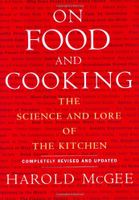Advertisement
Seed Oils
Appears in
By Harold McGee
Published 2004
Nuts and soybeans are rich in oil, which is kept in the mass of storage tissue in tiny packages called oil bodies. Each is a tiny oil droplet whose surface is covered with two protective materials: phospholipid relatives of lecithin, and proteins called oleosins. The surface coating prevents the oil droplets from pooling together. Seed oil bodies are very similar in size and structure to the fat globules in animal milk. This is why when we eat nuts, they become creamy in the mouth rather than simply greasy. It’s also one reason why for a thousand years cooks have made “milks” from almonds, soybeans, and other oil-rich seeds.


